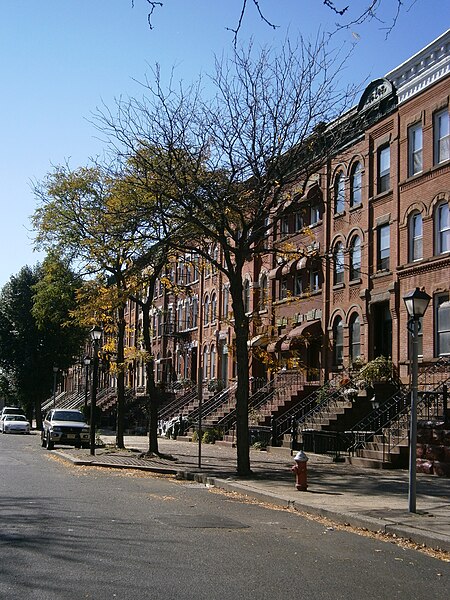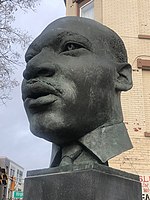Jackson Hill, Jersey City

Jackson Hill is a neighborhood in the Bergen-Lafayette and Greenville sections of Jersey City, New Jersey. It is part of the city's Ward F. The neighborhood is situated on Bergen Hill (the lower end of the Hudson Palisades) which also lends its name to the Bergen Hill Historic District just north of Communipaw Avenue. The district has long been the heart of the African American community in Jersey City. Its name is in part inspired by Thomas and John Vreeland Jackson, brothers born in 1800 and 1803, who were freed slaves who bought land in current day Greenville in 1831 and in 1857 laid out Jackson Lane between their houses. In 1900, the former Jackson Lane became Winfield Avenue, the name it bears today. During the Civil War the Jackson property became a safe house and critical link of the Underground Railroad.Martin Luther King Drive was once called Jackson Avenue. with a short block not included in a street realignment still bearing the name. In 1976 it was renamed in honor of the slain civil right leader Martin Luther King, Jr., who had twice spoken in the city. At the time of the renaming there was discussion whether the street had originally been named for the Jackson brothers or for US President Andrew Jackson. A 1924 Jersey Journal newspaper article ascribes it to Jeremiah Jackson, a local landowner in the mid-19th century. Historically, the avenue was one of the city's major shopping districts. but went into decline. In 2011, the Jersey City Redevelopment Agency created Jackson Hill Main Street special improvement district along the commercial corridors of MLK Drive and its northern continuation, Monticello Avenue.Among the notable sites in the Jackson Hill are two listed on National Register of Historic Places, St. Patrick's Parish and Buildings and Ficken's Warehouse, both on Grand Street. Sacred Heart Church and the Martin Luther King, Jr. Memorial are other area landmarks.
Excerpt from the Wikipedia article Jackson Hill, Jersey City (License: CC BY-SA 3.0, Authors, Images).Jackson Hill, Jersey City
Virginia Avenue, Jersey City
Geographical coordinates (GPS) Address Nearby Places Show on map
Geographical coordinates (GPS)
| Latitude | Longitude |
|---|---|
| N 40.7121 ° | E -74.0773 ° |
Address
Martin Luther King Drive
Virginia Avenue
07304 Jersey City
New Jersey, United States
Open on Google Maps








